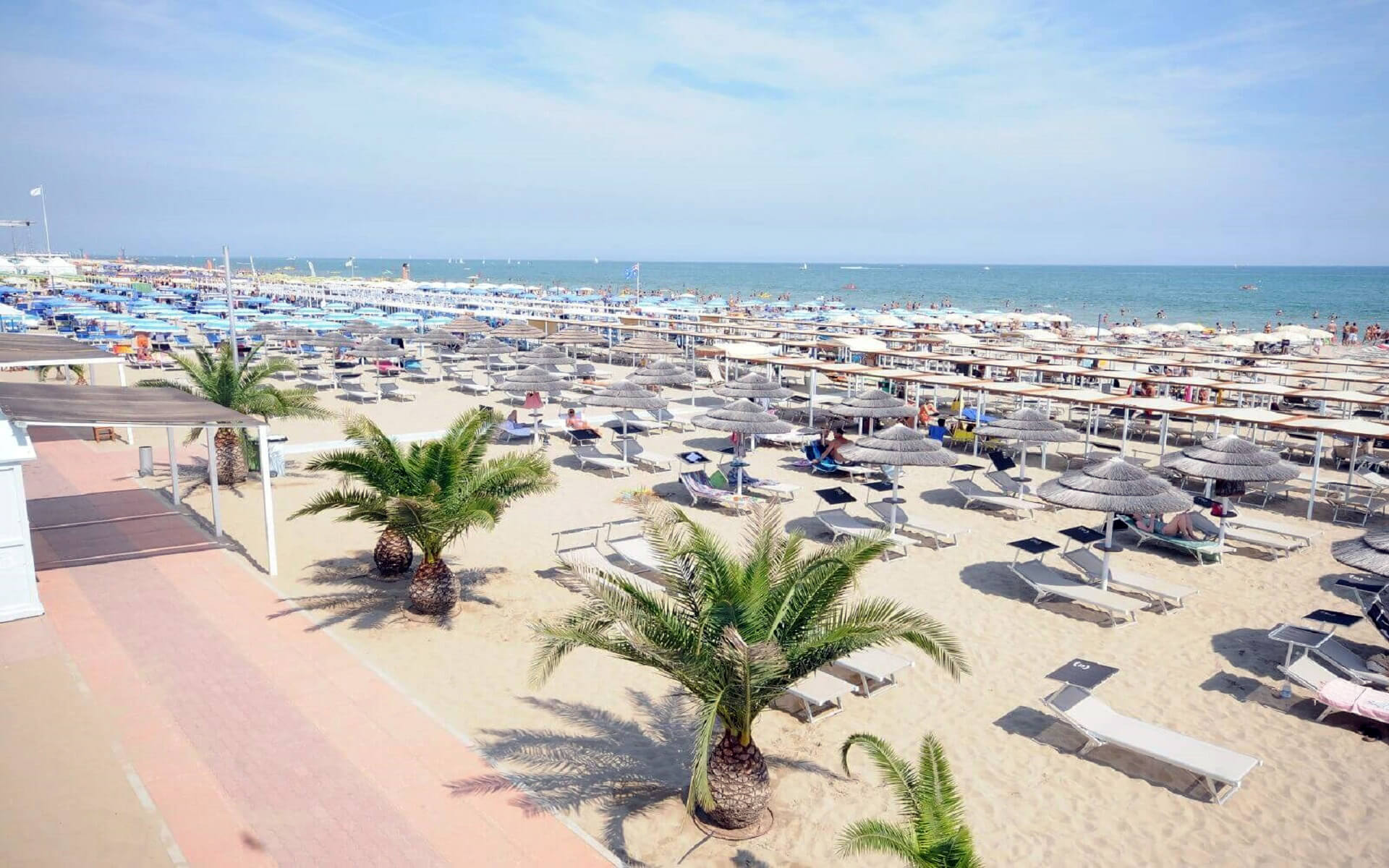Rimini is the capital city of the Province of Rimini and has a population of 146,606 people. It is located in the Emilia-Romagna region of Italy. It is situated on the shore of the Adriatic Sea, between the rivers Marecchia (the ancient Ariminus) and Ausa (ancient Aprusa). It is one of Europe’s most well-known coastal resorts, due to its 15-kilometer (9-mile) sandy beach, over 1,000 hotels, and dozens of bars, restaurants, and discos. In 1843, the first bathing institution opened. Rimini is an art city featuring historic Roman and Renaissance structures, as well as the hometown of acclaimed film director Federico Fellini.
Rimini was founded by the Romans in 268 BC and served as a key communications link between the north and south of the peninsula throughout their reign, with Roman emperors erecting monuments such as the Arch of Augustus and the Tiberius Bridge on its soil, while during the Renaissance, the city benefited from the court of the House of Malatesta, which hosted artists such as Leonardo and produced works such as the Malatesta Temple. Rimini was one of the most active towns on the revolutionary front in the nineteenth century, housing many of the groups aiming at the unification of Italy. During World War II, the city was the site of fighting and bombardment, as well as a furious partisan resistance that won it a gold medal for civic courage. Finally, in recent years, it has emerged as one of Italy’s most prominent trade show and conference venues.
The Rimini urban area has a population of around 225,000 people, whereas the province has a population of 330,000 people.


